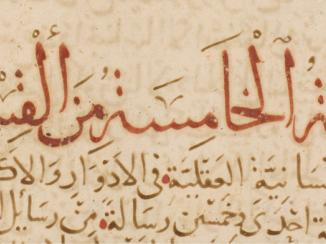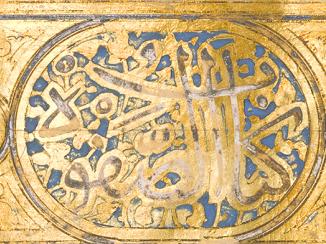Overview
Zoology in the modern understanding did not exist as a discrete field in the Arabic scientific tradition. Rather, references to animals are found in a range of genres, many of which are now represented within the Qatar Digital Library. Treatises range from those on the minutiae of veterinary, pharmacological, and medical expertise on living animals and animal products, through to broader cosmological enquiries on the place of ‘things created’ – both animals and humans – in the universe. These texts are unified by a utilitarian worldview which sees both humans and animals as God’s creations, but with animals subservient to – and useful for – people.
Sources and encyclopaedic works
Alongside pre-Islamic poetry and Qur’anic references, Greek works on animal lore were important early sources for Arabic writings on animals. Among these were certain treatises by Aristotle (384-322 BCE), rendered in Arabic as Kitāb fī ma‘rifat ṭabā’i‘ al-ḥayawān al-barrī wa-al-baḥrī (Add MS 7511).
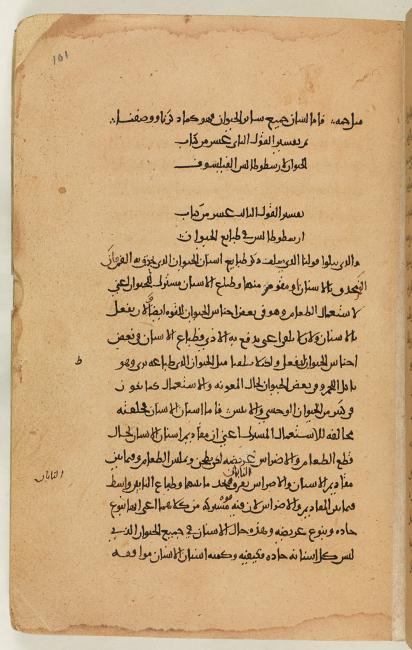
Large encyclopaedic accounts of the animal kingdom, containing literary and folkloric content as well as observational descriptions, were compiled from an early date. Such works include the Kitāb al-ḥayawān by al-Jāḥiẓ (d. 255 AH/868-69 CE), Kitāb ṭabāʾiʿ al-ḥayawān by al-Marwazī (fl. fifth-sixth/eleventh-twelfth century; Delhi Arabic 1949; Add MS 21102), and Kitāb ḥayāt al-ḥayawān by al-Damīrī (d. 808/1405; Or 10885; QNL 9541). Individual entries in these works follow a standard arrangement, typically describing the male, female, and offspring of animals, any variant species and their names, behaviours, and the medical properties of their bodies and by-products.
Wonders of creation and the usefulness of animals
These treatises classify their subject-matter by perceived behavioural and physical characteristics, such as modes of movement, diet, or social behaviours. The celebrated ‘Ajā’ib al-makhlūqāt wa-gharā’ib al-mawjūdāt, an illustrated cosmography by al-Qazwīnī (d. 682/1283), first lists animals suitable for riding, followed by those which graze, hunt, fly, and creep, and those associated with water. ʿAjāʾib al-makhlūqāt, of which ‘the London Qazwini’ (Or 14140) is one of the earliest copies, enjoyed an enduring popularity, being translated into Persian (Or 1621), Turkish, and South Asian contexts with their own evolving illustrative traditions.
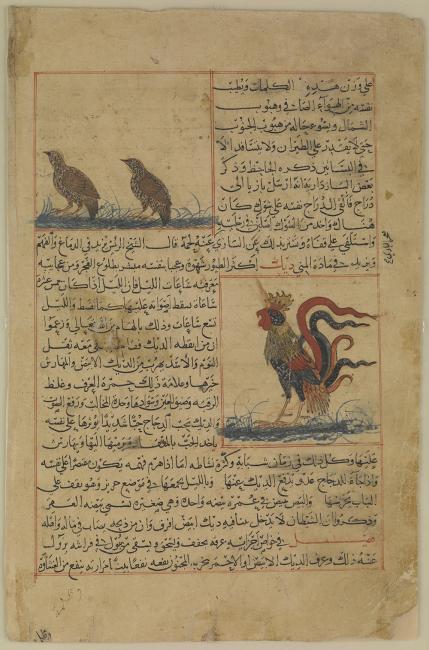
Another encyclopaedic animal genre known as the naʿt al-ḥayawān (‘characteristics of animals’) tradition, is organised along similar lines. While ‘Ajā’ib al-makhlūqāt aspires to a comprehensive cosmology encompassing mythical beasts, jinn, and humans as well as plants, the naʿt al-ḥayawān compilations concern animals alone. Both traditions also embrace mythical and narrative contents and share the aim of inducing awe at God’s wondrous creations. These hybrid texts present animals’ typical behaviours as well as the specific medicinal uses to which their body-parts and by-products can be put. A richly illustrated copy, probably the earliest surviving (c. 622/1225), is an important witness to early thirteenth-century painting in the Arab world and is now in the British Library collection (Or 2784).

Animals in pharmacology and medicine
Dietetics, rooted in Galenic humoral pathology, was a cornerstone of Arabic medicine. Manuals such as the Taqwīm al-ṣiḥḥah of Ibn Buṭlān (d. c. 460/1068; Or 1347) discuss the impact on health of animal products such as milk, fish, and meat.
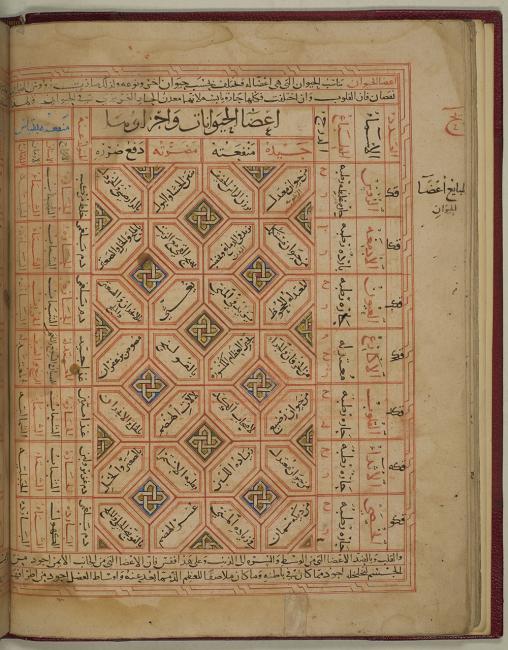
Animal parts and products including urine, faeces, blood, hides, feathers, and organs (alongside herbal and mineral entries) were also included by the compilers of practical medical and pharmacological manuals on the treatment of both human and animal diseases. Not least among these is the al-Qānūn fī al-Ṭibb of Ibn Sīnā (Avicenna, d. 428/1037; see for example Or 4946, Or 5033, Or 3343).
The Minhāj al-bayān fīmā yastaʿmiluhu al-insān by Ibn Jazlah (d. 493/1100) is an alphabetically-arranged handbook which lists both simples (individual ingredients) and recipes for compound medicines; an early copy, made within the author’s lifetime, is held at the British Library (Or 7499) and another copy is found in Or 9452, ff 21v-62r. Books on toxicology, such as Kitāb al-sumūm wa al-tiryāqāt by Ibn Waḥshīyah (third/tenth century; Add MS 23604) include remedies using snake venom and flesh as base ingredients for antidotes to poisons and snakebites. In an extension of this tradition, texts like the Kitāb al-khawāṣṣ al-kabīr attributed to Jābir ibn Ḥayyān (c. second/eighth-ninth century) discuss the occult and alchemical properties of, among other things, animal parts (Or 4041).
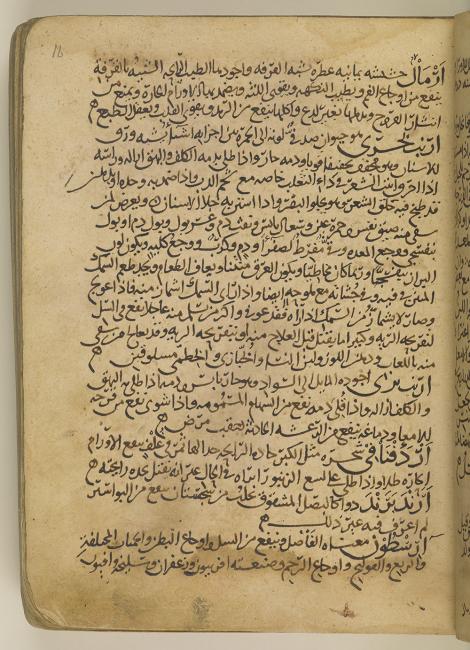
The care of animals in war and peace
A very large body of material survives on veterinary medicine (bayṭarah), much of which relates closely to human medicine, especially in the realms of physiology and surgery. Horses were highly valued at all levels of society, and copies of treatises on horse medicine (hippiatrics, also known under the term zardaqah) such as Kitāb al-furūsīyah wa-shiyāt al-khayl by the ‘Abbasid horse-trainer Ibn Akhī Ḥizām (fl. c. 287/900; Add MS 23416; Or 1523) or the treatise of al-Bayṭār (also known as Ibn al-Mundhir, d. 741/1340-41), chief veterinary surgeon to the Mamluk sultan al-Nāṣir Qalāwūn (Add MS 14056, ff 19r-123v), represent a specific subset of veterinary works.
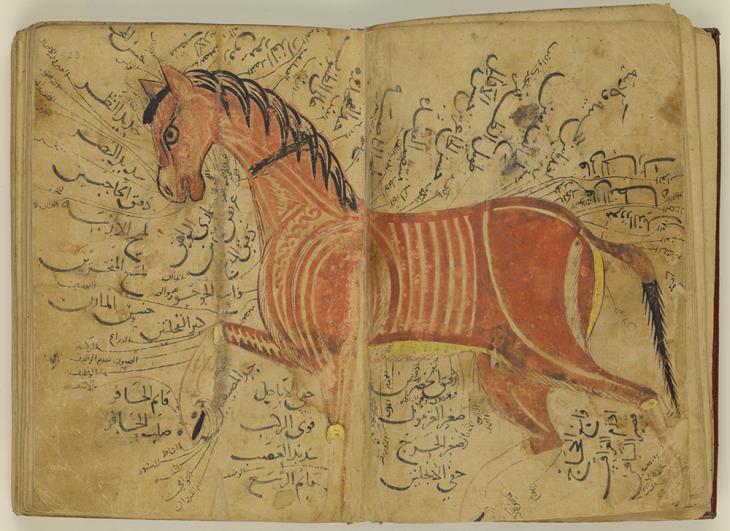
Horses were also central in both warfare and the hunt, with superb riding ability a prerequisite to more elaborate skills involving the bow, lance, and sword. Furūsīyah (horsemanship) treatises, some illustrated such as Nihāyat al-su’l wa-al-umnīyah fī ta‘allum a‘māl al-furūsīyah attributed to al-Aqṣarā’ī (d. 748-9/1348; Add MS 18866), describe the care of horses as well as riding skills, tricks, and horseback games like qabaq (shooting at a target at full gallop). Many surviving compositions and copies date from the highly militarized Ayyubid and Mamluk societies of Egypt and Syria (564-923/1169-1517).
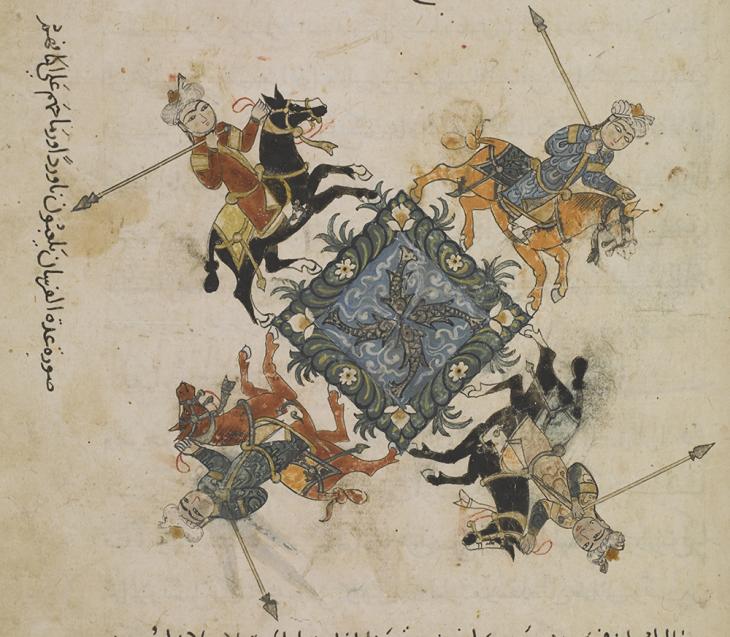
Treatises on the hunt – a training ground for warriors – such as al-Asadī’s (fl. 544-66/1150-70) al-Jamharah fī ‘ilm al-bayzarah (Add MS 23417) include sections on the care and treatment of the animals critical to this pursuit, including dogs, cheetahs, and falcons. Specialist works on the health and care of birds of prey were also composed, such as al-Waṭwāṭ's (d. 718/1318) al-Qānūn al-wāḍiḥ fī ‘ilm al-bayzarah (Or 8187; Or 15639). Finally, works on agronomy and husbandry such as the aforementioned Ibn Waḥshīyah’s Kitāb al-Filāḥah al-Nabatīyah also include sections on the care of animals (Add MS 22371).

Conclusion
This fascination with animals is of course evident in other literary genres, such as poetry and fable, in which animals are employed as allegorical and moralistic devices to illuminate human behaviour, emotions, and impulses. Nonetheless, the extensive Arabic scientific writings on the classification, uses, and veterinary care of animals testify to the profound practical expertise and experience with animals shared by veterinarians, pharmacologists, medics, and military figures over many centuries.























